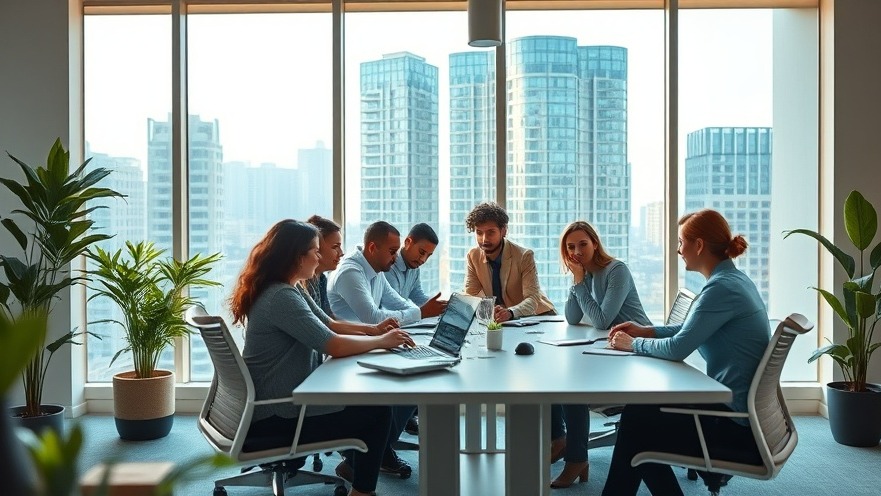
Designing a Workspace: What the New Amsterdam Residential Tower Tells Us About Efficiency
The Jay, a concrete-clad residential tower designed by the renowned Dutch architecture studio OMA, occupies the site of a former prison in Amsterdam. While some see modernity in this new form of housing, others criticize it as "the most dull project of the year," questioning the appropriateness of its design heritage. Comments range from disdain to curiosity, prompting thoughts about how urban design influences our living environments—especially for digital nomads striving for efficiency and comfort in their workspaces.
The Significance of Space Design
For digital nomads, the significance of living and workspaces cannot be overstated. The immediate environment can massively affect productivity and well-being. The design of The Jay has raised eyebrows, primarily due to its prison-inspired aesthetic. But what can we take away from this when planning our own workspaces? In assessing how function and aesthetic merge, nomads can find inspiration in both the stark realities of utilitarian design and the elegance of ergonomics.
Designing Effective Workspaces: Lessons from Architecture
As the world rapidly modernizes, effective workspace design is crucial. Iconic structures like The Jay may incite critique, yet they also challenge us to rethink how we approach our daily tasks. Digital nomads, in particular, should consider leveraging principles from such designs. This means making simplicity a priority in workspace setup, incorporating modular furniture that can adapt to multiple uses, and ensuring a good flow of natural light—elements that breathe life into monotonous routines.
Common Misconceptions About Minimalist Designs
A common misconception is that minimalist designs equate to boring spaces. Analyses of architecture suggest that simplicity can create boundaries that enhance focus and productivity. Nomads should not shy away from minimalist principles when adopting new workspaces. Instead, consider how such simplicity can be visually appealing and liberating, allowing flexibility and creative freedom while avoiding clutter that could impede work.
Future Predictions: The Direction of Urban Living Spaces
As urban living continues to evolve, predictions point towards incorporating more adaptable spaces into design. The backlash against buildings like The Jay may cultivate a demand for dynamic, multifunctional environments. For nomads, this means spaces that can transform—from quiet working areas to social hubs—without needing extensive modifications. Such flexibility can enhance the quality of life, fostering community and collaboration in the digital age.
Engaging with Architecture Critically
Engaging with architecture means recognizing the impact it has on cultural identity and individual experiences. Commenters on Dezeen’s coverage of The Jay show rising interest in how buildings serve those who occupy them. Digital nomads can benefit from assessing local architecture, drawing valuable lessons from design critiques, and applying them to create inspiring workspaces wherever they might roam.
The critiques around The Jay highlight the importance of not only function but emotion and community in spaces we inhabit. As remote work continues to define this era, understanding design's nuances can better equip digital nomads to harness productivity and cultivate comfort.
Call to Action
Interested in optimizing your remote workspace? Begin today by evaluating your current setup. Look for ways to incorporate ergonomic principles that benefit both your health and your productivity. Small changes can create a big impact! For further insights and guidance on workspace ergonomics, consider subscribing to our newsletter, where we share the latest tips and trends in remote work design.
 Add Row
Add Row  Add
Add 




Write A Comment